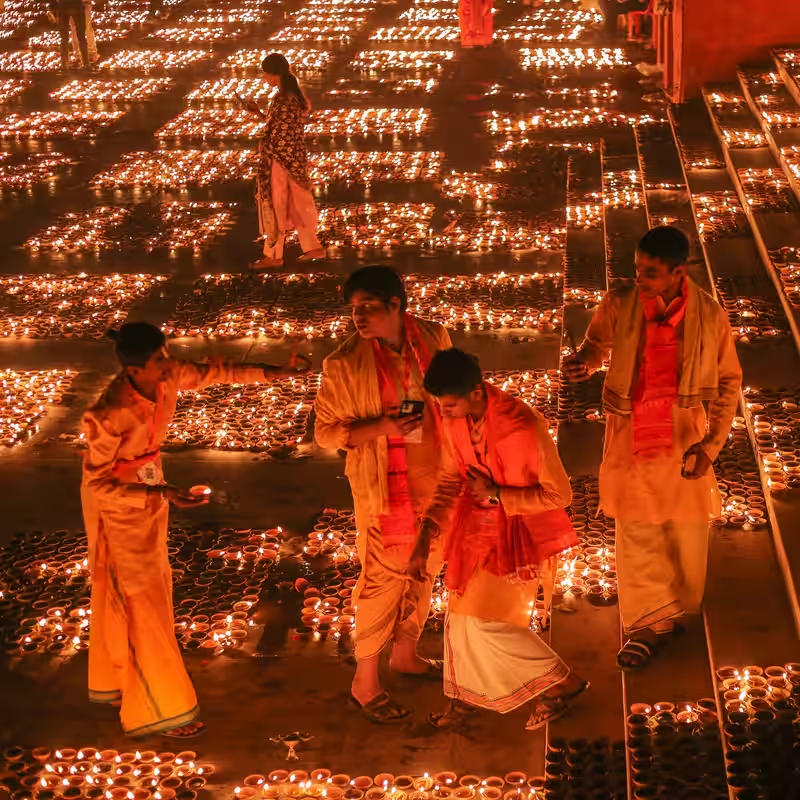Table of Contents
- What Is Diwali?
- Regional Variations Across India
- How Diwali Is Celebrated Today
- Diwali’s Global Footprint
- Sources
What Is Diwali?
Diwali, also known as Deepavali, is more than just a festival—it’s a luminous celebration of hope, renewal, and the enduring victory of light over darkness. Observed by Hindus, Jains, Sikhs, and some Buddhists, this multi-day event is India’s biggest public holiday and a cornerstone of cultural identity for over a billion people worldwide.
Falling between mid-October and mid-November (this year on October 20, 2025), Diwali is steeped in mythology, tradition, and sensory delight—think flickering oil lamps, vibrant rangoli designs, explosive fireworks, and mountains of syrup-soaked sweets.
Symbolism and Spiritual Meaning
At its core, Diwali symbolizes the triumph of good over evil. For many, it’s a time for introspection, gratitude, and invoking blessings for prosperity in the year ahead. Homes are thoroughly cleaned to welcome Lakshmi, the goddess of wealth, while families gather to light diyas (clay lamps) that represent inner enlightenment.
Regional Variations Across India
India’s cultural diversity shines through in how Diwali is interpreted from region to region:
| Region | Mythological Basis | Key Traditions |
|---|---|---|
| North India | Return of Lord Rama after defeating Ravana (Ramayana) | Fireworks, family feasts, Lakshmi Puja |
| South India | Lord Krishna’s victory over demon Narakasura (Mahabharata) | Early morning oil baths, special sweets like murukku |
| West India | Start of the new financial year for businesses | Chopda Puja (worship of account books) |
| East India | Worship of Goddess Kali | Kali Puja coincides with Diwali night |
How Diwali Is Celebrated Today
Modern Diwali blends ancient rituals with contemporary flair:
- Decorations: Homes and streets glow with fairy lights, marigold garlands, and intricate rangoli.
- Sweets & Savories: Families exchange boxes of laddoos, barfis, and jalebis—a gesture of goodwill.
- New Clothes: Wearing fresh attire symbolizes a fresh start.
- Fireworks: Though increasingly regulated due to pollution concerns, fireworks remain a nostalgic highlight for children.
In recent years, eco-conscious celebrations have gained traction—biodegradable diyas, LED lights, and noise-free crackers reflect a growing environmental awareness.
Diwali’s Global Footprint
Beyond India, Diwali is now a global phenomenon. Major cities like London, New York, and Sydney host public celebrations. In 2023, the U.S. Postal Service even issued a Diwali commemorative stamp. The White House has hosted Diwali receptions since 2003, and in 2025, landmarks like the Empire State Building are expected to illuminate in saffron, green, and white—the colors of Diwali and the Indian flag.
[INTERNAL_LINK:diwali-traditions] | [INTERNAL_LINK:hindu-festivals]




